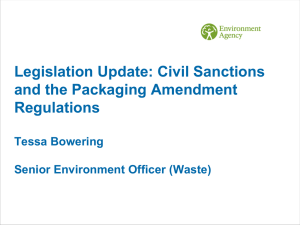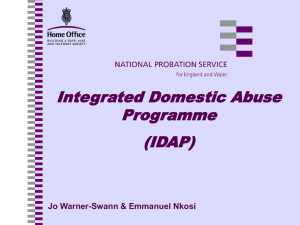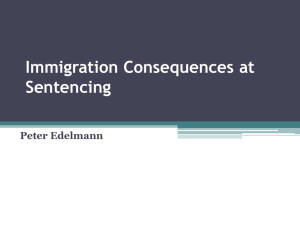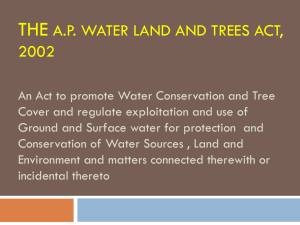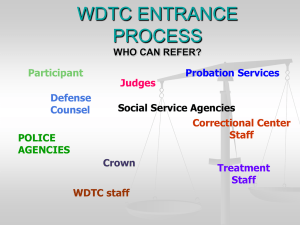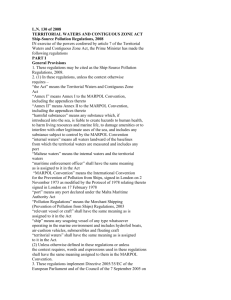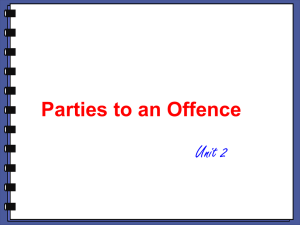Drug Misuse and Trafficking - legalstudies-HSC-aiss
advertisement
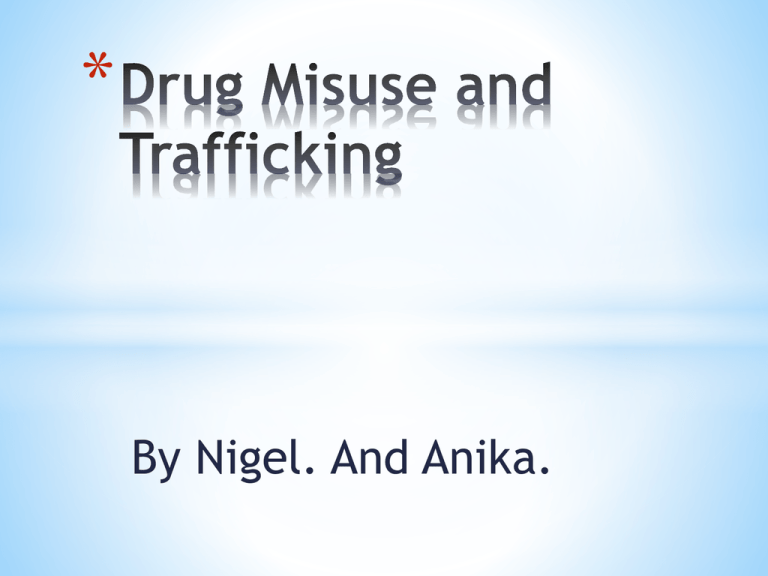
* By Nigel. And Anika. * * The Drug Misuse and Trafficking Act 1985 prohibits the cultivation, manufacture, supply, possession and use of certain drugs. Offences with respect to prohibited plants * The cultivation [more on next slide], supply or possession of prohibited plants is an offence under s 23(1) carries a penalty of 10 years imprisonment. * In other cases not relating to cannabis plant/leaf, the penalty is 15 years. * * Cultivation for profit The cultivation of cannabis for profit will usually attract a term of imprisonment, unless there are exceptional circumstances. The profit sought to be made is highly relevant to the assessment of an offender’s criminality in a case of cultivation. * Stage of cultivation An offender arrested at an early, rather than a late stage of cultivation is not entitled to any particular mitigation as a result * Growing plants for personal use A finding of fact at sentence that the cultivation was for personal use rather than for profit generally reduces the objective seriousness of the offence * *Supply Supplying involves any act that an individual performs knowingly with any links to selling and distributing. Examples Attempting to supply – More serious Offering or agreeing to supply – Less serious A person who has a big amount of drugs will be automatically Deemed to be supplying. Unless they can proof otherwise that they have obtained the drug medically from pharmacies. *Trafficking A person who supplies drugs on more than one occasion to a degree where his or her activities can be described as “trafficking” . Examples – Repeated Offence = Trafficking. One Offence = Supplying. * * Supplying or taking part in the supply of prohibited drugs is an offence under s 25(1) which carries a penalty of 10 years imprisonment where the offence involves less than a commercial quantity and relates to cannabis plant/leaf. In other cases not relating to cannabis plant/leaf, the penalty is 15 years. * Supplying or knowingly taking part in the supply of more than a commercial quantity is an offence under s 25(2) which carries a penalty of 15 years imprisonment where the offence relates to cannabis plant/leaf. In other cases, the penalty is 20 years. * Where more than a “large commercial quantity” is involved the penalty is 20 years imprisonment where the offence relates to cannabis plant/leaf. In other cases, the penalty is life imprisonment Less Than a commercial quantity = 10 years [Other cases = 15years] More than a commercial quantity = 15 years [Other cases =20years] “Large commercial quantity” = 20 years [Other cases = life imprisonment] * *Section 25A — Offence of supplying prohibited drugs on an ongoing basis. Three or more separate occasions during any period of 30 consecutive days = Ongoing Supply. Therefore will be charged under S25A. The maximum penalty for this offence is imprisonment for 20 years. * Supplying to undercover police Drugs supplied to undercover police won’t go to the community. The offender believed that the drugs were likely to find their way into the community. The offender will be charged with no defence as they had the intent to supply it to the community. * *Quantity and purity of drug Section 4 the Drug Misuse and Trafficking Act provides that: * “In this Act, a reference to a prohibited drug includes a reference to any preparation, admixture, extract or other substance containing any proportion of the prohibited drug.” Purity is one of the factors considered when determining whether an offence falls into the mid-range of seriousness. [Higher level of purity = Higher destructive potential = More Serious] [Higher Quantity = More Serious] *A little case. * In R v Shi [2004] NSWCCA 135 the sentencing judge found that the unusually high level of purity of the drug methylamphetamine — 84.5% — was an aggravating factor under s 21A(2)(i) of the Crimes (Sentencing Procedure) * * The offender’s role and the level of criminality involved is more important in determining a sentence than the quantity of drugs involved, which is not the sole or even principal determinant. An offender who combines the role of a principal and leader of an extensive and well organised network, distributing large commercial quantities of prohibited drugs, exhibits criminality of a high order. Higher ranked in drug network = More serious = higher punishments / consequences. Case Example The court in R v Shi concluded that the role of the offender is germane to the assessment of the objective seriousness of the offence and its location in the notional range of seriousness. R v Shi was applied in R v Blair (2005) 152 A Crim R 462, where a principal reason for determining that the offence did not fall into the mid-range of seriousness was the role of the applicant. He was not a principal but played the lesser role of a courier and storeman. * * Good Character Very frequently, those selected to play some part in the chain of drug trafficking are selected because of having no past criminal records so that they wont attract suspicion. An offender’s prior good character and lack of criminal history are to be taken into account on sentencing – usually less harsh. * The relevance of addiction [Not addiction to drugs but to supplying drugs for profit]. An offender who is not a drug user but supplies drugs out of greed is placed in the worst category of suppliers. [Addiction to drugs] – The need to acquire funds to support a drug habit is not an excuse to commit an armed robbery or any similar offence. It is not a matter of mitigation. However, vulnerability of the offender due to his age, background and drug addiction will also be taken in account. * * Section 21A(2)(g) — Substantial injury, emotional harm, loss or damage caused by offence Cannot be given any additional significance as an aggravating factor in the absence of any evidence that particular harm was caused * Section 21A(2)(i) — Offence committed without regard for public safety Section 21A(2)(i) cannot be taken into account as an aggravating factor for the offences referred to above unless its nature or extent in the particular case is unusual. * Section 21A(2)(l) — Vulnerability of victim * Section 21A(2)(m) — Multiple victims or series of criminal acts An offence may be aggravated under s 21A(2)(m) where the offence involves a number of allegations of criminal acts that are part of a single course of criminal conduct, such as multiple instances of supplying drugs over a lengthy period of time charged as one offence under s 25 Drug Misuse and Trafficking * Section 21A(2)(n) — Planned or organised criminal activity The seriousness of a drug offence may be aggravated where the amount of planning involved exceeds that ordinarily expected of an offence of that kind. * Section 21A(2)(o) — Offence committed for financial gain Financial gain is an ingredient of an offence of ongoing supply under s 25A. * Section 21A(3)(d) — Offender acting under duress [Forced] In drug cases, duress can be a significant mitigating factor on penalty.
